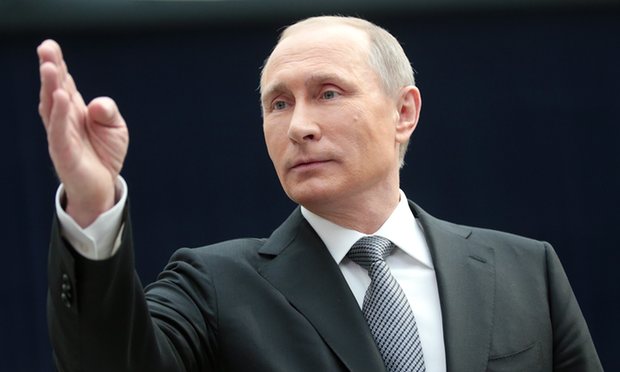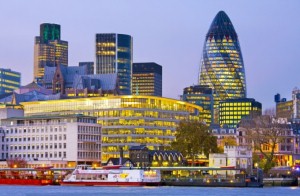USA on war footing - impact on property investors
04-06-2018
PropertyInvesting.net team

More objective guidance and insights for property investors. Our aim is to help you improve your investment returns, flag key risk areas and stimulate strategic thought so you can position your portfolio to maximize gain, for our five thousand website visitors a day and the thousands of people signed up to your Newsletter. This Newsletter cover one key topic:
Global Security Situation Impact for Property Investors
War Footing: Its count down to war between USA and North Korea. Kim-Un has started a charm offensive firstly with China by instigating his first ever state visit outside North Korea slipping out by train for a  meeting with President Xi Jinping. Then he has planned a Korean summit with South Korea. We believe this is all to gain some form of regional support prior to his meeting with President Trump. He wants to be able to negotiate with Trump. However, there will be no negotiation. Instead we believe Trump plans to simply tell Kim-Un that unless he destroys his ballistic and nuclear capability in short order, the USA will bomb North Korea and take out Kim-Un. Trump has bolstered the hawkish side with the recruitment of Mike Pompeo (Head of the CIA) to replace Rex Tillerson (a businessman) and John Bolton (who is famous instigating the invasion of Iraq and is a strong proponent of unilateral pre-emptive strikes) to replace MH McMaster.
meeting with President Xi Jinping. Then he has planned a Korean summit with South Korea. We believe this is all to gain some form of regional support prior to his meeting with President Trump. He wants to be able to negotiate with Trump. However, there will be no negotiation. Instead we believe Trump plans to simply tell Kim-Un that unless he destroys his ballistic and nuclear capability in short order, the USA will bomb North Korea and take out Kim-Un. Trump has bolstered the hawkish side with the recruitment of Mike Pompeo (Head of the CIA) to replace Rex Tillerson (a businessman) and John Bolton (who is famous instigating the invasion of Iraq and is a strong proponent of unilateral pre-emptive strikes) to replace MH McMaster.
Meetings and Threats: There is a series of meeting in April and May our belief is that Kim-Un will play games, not back down and the USA will start military actions by early Jun e. This will have an impact on oil and gold prices they will rise sharply. The stock markets could tank particularly in the Far East and such military actions would increase inflationary pressures and potentially lead to a further round of currency printing.
e. This will have an impact on oil and gold prices they will rise sharply. The stock markets could tank particularly in the Far East and such military actions would increase inflationary pressures and potentially lead to a further round of currency printing.
US Dollar under threat: The USA has invaded every country that has threatened the might US Dollar as the Petrocurrency of the world look at Iraq, Libya for examples. China end March launched Yuan back oil futures in Shanghai and is hoping to set up a Chinese oil benchmark. The US will see this as a direct threat to the US Dollar and this will be a further reason why they will want to get involved in North Korea they think China has done nothing to stop Kim-Un and to exacerbate matters has recently launched Yuan back oil.
Trade War: The trade war between the USA and China has very much commenced and is likely to worsen. With it the US dollar will start to be pressured commence a long decline. After all, huge amounts of UDS debt are owned by the Chinese and once China pulls the plug on funding US Treasuries the dollar will drop and gold and silver prices will rise sharply.
Commodities: Meanwhile Russia gets more vocal and threatening after the poisoning incident in Salisbury with the international community ganging up against them. Putin again is threatened and is threatening. Overall we think by mid 2018 some war will break out and this will send oil, g old and silver prices sharply higher. The US stock market is likely to take a big hit particularly high-tech companies. Commodities companies are the ones that are likely to do best. A significant development in the last six months has been Saudi Crown Prince Solman meeting both Trump and Putin he wants a high oil price to help the IPO float of Saudi Aramco and their finances to fund his vision of industrial transformation called Vision 2030. Sure enough oil prices have rise to around $67/bbl which is putting pressure on inflation certainly in the UK. Anything over $75/bbl should send alarm bells ringing for property investors since higher inflation rapidly feeds through to higher interest rates, higher borrowing costs, lower yields and thence lower property prices. We are in amber territory now.
old and silver prices sharply higher. The US stock market is likely to take a big hit particularly high-tech companies. Commodities companies are the ones that are likely to do best. A significant development in the last six months has been Saudi Crown Prince Solman meeting both Trump and Putin he wants a high oil price to help the IPO float of Saudi Aramco and their finances to fund his vision of industrial transformation called Vision 2030. Sure enough oil prices have rise to around $67/bbl which is putting pressure on inflation certainly in the UK. Anything over $75/bbl should send alarm bells ringing for property investors since higher inflation rapidly feeds through to higher interest rates, higher borrowing costs, lower yields and thence lower property prices. We are in amber territory now.
Bond Market Bubble Could Go Pop: For UK property investors then concern apart from of course seeing destruction around the world is that inflation and interest rates are likely to rise and currencies like the dollar decline possibly along with Sterling. The US bond market bubble could well pop shortly bond rates are starting to climb as government bond rates rise and bond prices-values are like ly to drop sharply. There has been a 40 year bond bull market driven by low interest rates and this is likely to end shortly we believe.
ly to drop sharply. There has been a 40 year bond bull market driven by low interest rates and this is likely to end shortly we believe.
Safe Have Assets: Property of course is a safe haven asset since it is a super hedge against inflation and government dont normally seize property albeit property taxes are likely to rise still further as governments become increasingly desperate to raise funding for social services since their debts are so huge.
Fed at Risk: If the US Fed and large banks get into trouble then next time the only entity that will be able to save the banking system is the IMF. The printer or last resort. Certainly we expect more quantitative easing one a recession starts and people find it difficult to pay for interest rate rises.
Tough Times: Its very tough to see good investment opportunities at this time since the US and UK stock markets look very high, debts are gigantic and property prices also look high. Probably the best bed is buying silver bullion at this time. Gold also looks cheap. When you take all the US money that has been printed since the USA came off the gold standard then divide by the amount of gold on the planet instead of $1350/ounce gold should conservatively be worth $25,000 an ounce with some estimates upwards of $65,000. The point is that quantitative easing of digital currency printing over the last 10 years has been gigantic and this has created bubbles in the stock market and pr operty also supported the bond market bubble. Its now time we believe for gold, silver and oil to be driven up particularly if war breaks out in Korea, China or anywhere also the US military get involved in for example Russia or the Middle East Iran.
operty also supported the bond market bubble. Its now time we believe for gold, silver and oil to be driven up particularly if war breaks out in Korea, China or anywhere also the US military get involved in for example Russia or the Middle East Iran.
UK Attractive: In the UK property still remains a fairly attractive long term proposition and one could make the argument that with all the Brexit doomsayers active, now could be a good time to buy. However, we would hold off and see what happens in case of war and higher interest rates, since property prices could be in for a dip if they are affected by these or a recession its not really a safe time to buy.
Some reasons longer term why property is set to continue to be a good investment, particularly in London:
High Birth Rate in London: One of the main reason for robust London property prices is that Londons population forecast to reach 9.8 million by 2025 due to overseas arrivals and high birth rate (figures from  the Office of National Statistics). New arrivals to London have offset the high numbers leaving the city for other countries and the rest of the UK. The population of London grew at twice the rate of the UK as a whole between 2011 and 2015. Londons population is likely to reach almost 10 million by the middle of the next decade.
the Office of National Statistics). New arrivals to London have offset the high numbers leaving the city for other countries and the rest of the UK. The population of London grew at twice the rate of the UK as a whole between 2011 and 2015. Londons population is likely to reach almost 10 million by the middle of the next decade.
Population Boom: In mid-2011, the population of the city stood at 8.2 million - over four years it increased by 469,000 to just under 8.7 million. The arrival of 200,000 people from overseas each year, and an average of 130,000 births a year drove the citys growth, and offset the high numbers leaving the city for other countries and the rest of the UK. This corresponded to Londons population increasing by 5.7% between mid-2011 and mid-2015, compared with growth of 2.9% for the UK as a whole. During this time, London property prices rocketed by 47% between June and 2011 and June 2015, from £285,906 to £419,474. From mid-2011 and mid-2015, after Greater London, Bristol is the city with the large population rise of 4.5%, or 49,000, to 1.1 million.
Net Migration: In London an average of 192,000 people came in each year from abroad including Britons who have returned after a period living overseas while 95,000 moved in the other direction. Net international migration to Greater London averaged 97,000 a year, out of a figure of 236,000 for the UK as a whole. There were an average 130,000 births in the capital each year and just 48,000 deaths.
Age Profile: Each year 63,200 people left the capital, with the 22- to 29-year-old age group the only one where more people moved in. Among 30- to 44-year-olds, 33,600 more people moved out of Greater London than into the city each year, while among children that figure was 31,700.
Bristol Boom: As an aside, Bristol saw more people move in from around the UK, with net internal migration averaging 3,700 a year between mid-2011 and mid-2015. The population of Edinburgh was also boosted by internal migration, with 2,700 more people moving into the Scottish capital than out. House prices in those cities have also increased.
Population projection: The population of Greater London is projected to grow by 12.7% between 2015 and 2025, to 9.8 million people. In the UK, the biggest projected increase is among those aged 65 and over, where the population is expected to grow by 21%. In London, this age group is projected to grow by a quarter over the decade.
Supply shortage: Meanwhile the number of London homes had grown by only 3.5% between March 2011 and March 2015. For a population increase of 192,000 a year, about 95,000 new homes are required to keep pace with this growth. However, only about 25,000 London homes are being built each year and this is set to dramatically drop to more like 15,000 in 2017 off the back of reduced confidence after the Brexit vote. The level of net immigration is not likely to reduce in the next three year and there is even an argument it may increase as people try and beat the deal deadline before it gets more difficult to move in and gain residency.
before it gets more difficult to move in and gain residency.
Building Application Crash: Its worth noting the level of new building applications crashed to 25% of the rate achieved just prior to the Referendum. This is a pretty good leading indicator pointing to dramatically lower building levels in 2017.
Luxury Flats: Its also worth pointing out that the bulk of the new homes being built in London are luxury apartments, many along the river, that sell for sums in excess of £1 million. These homes are often snapped up by foreign buyers and many are not lived in all year around. Hence the little home building taking place is not exactly helping the housing shortages for mid and lower wage earners. Almost no houses are being build in London.
Buy-To-Let Tax: The draconian taxes on private buy-to-let businesses is also hindering building supply as many of these people would be purchasing new builds, and the market for such properties will now soften in London because of the tax treatment on property as a business. This will further exacerbate the already chronic housing crisis in London.
Stamp Duty: The 3% stamp duty on second homes is also likely to hinder building since it makes it more risky for property developers to sell properties since the government is taxing the building of these properties. This will further exacerbate the chronic housing crisis.
Sterling Decline: Some people have mooted that Brexit will cause London property prices to come crashing down. So far if anything it has had the opposite effect. As an example, Chelsea and Kensington house prices were dropping just prior to the Brexit vote, but they are now rising. The reason is that Sterlings value has declined by 20% which make these properties 20% less expensive compared in dollar or Euro terms for foreign buyers. The Chinese in particularly are seeing prime central London property prices at arguably bargain levels and are supporting the house price growth. In addition, the interest rates dropped by 0.25% which made borrowing cheaper which also supported property prices immediately after the Referendum result. Thats not to say of course that all the financial uncertainty might not cause prices to drop in 2017 in the Prime London property market, but for now, the latest numbers from Rightmove suggest accelerating house price growth like we normally get in September after the quieter summer season business as usual.
London Property Shortage Worsens: The key point to make it that its far more difficult for property prices to come crashing down if the population is booming, employment stays robust and there is a chronic shortage of properties. This trend is nothing new, its something we have been warning about now for 11 years. The seeds were sown 15 years ago when building levels dropped whilst the London economy boomed and Tony Blairs government opened the flood gates for migration from EU countries and overseas countries in part to boost growth. This was of course continued by successive governments and looks unlikely to slow any time soon.

Financial Services: Longer term, the financial services sector in London is likely to slow significantly in view of the Brexit the outcome of which is likely to be rather negative for business as a whole in the next 1-3 year timeframe. There will be many stories of bank staff either positioning to leave London or actually leaving London. Some banking staff will be coming in the other direction. Car manufacturers will threaten to move to mainland Europe despite the drop in Sterling.
Net Deficit: the decline in Sterling has at least reduced the UK trading deficit and boosted manufacturing there is little evidence so far of large scale jobs losses and factory closures caused by Brexit albeit is fairly early days. The decline in Sterling has made manufacturing more competitive.
We hope this Special Report has given you some good insights to help with your property investment. If you have any queries, please contact us on enquires@prpertyinvestinmg.net

